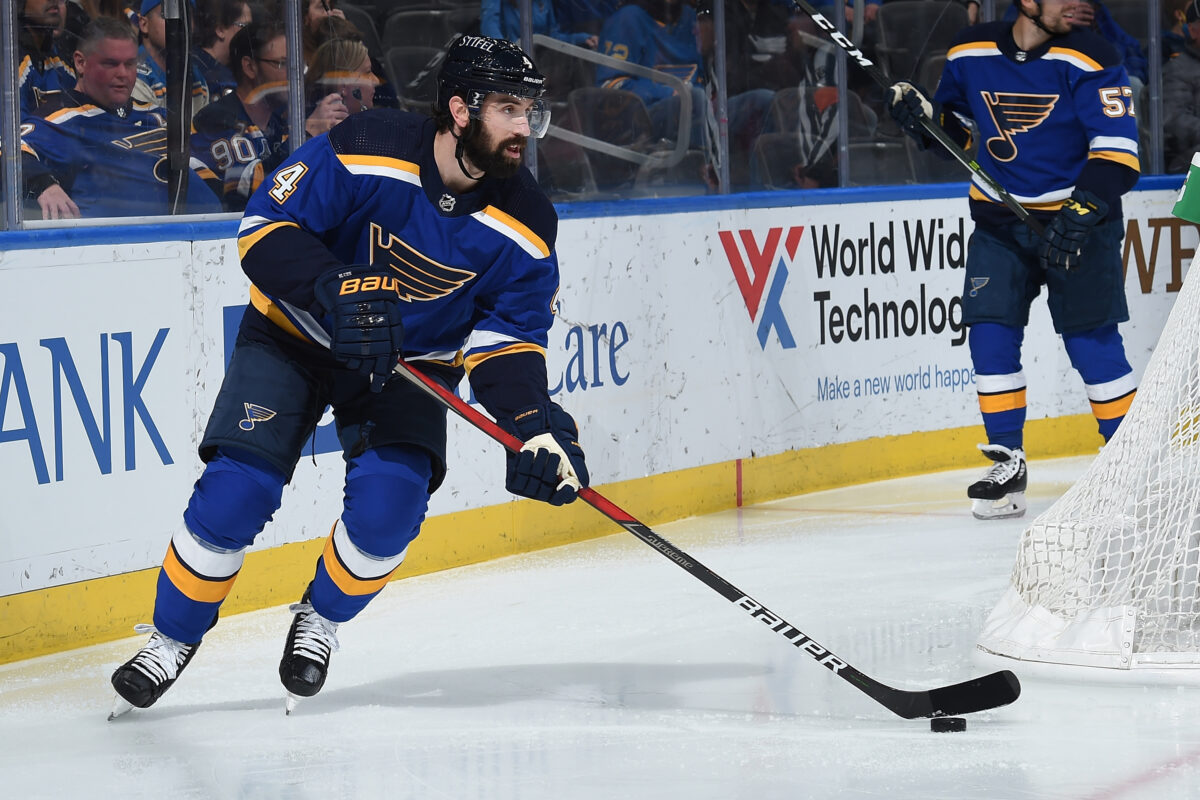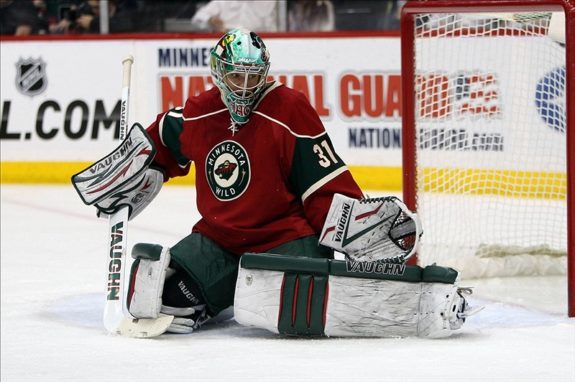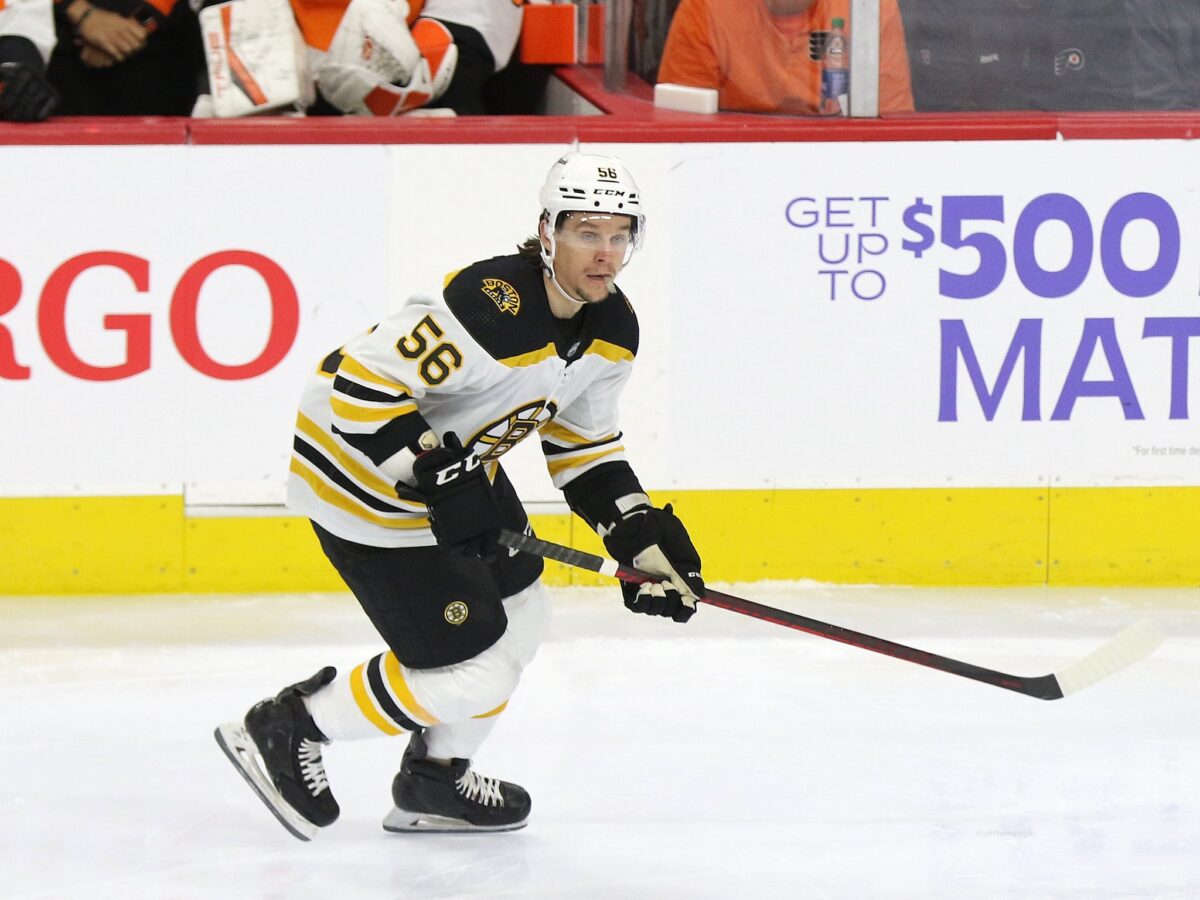The 10th installment in this series has arrived after previously looking at how the Minnesota Wild did in their first nine drafts. If you missed any of them or want a refresher, you can find those recaps below:
- 2000: Franchise’s Inaugural Draft
- 2001: Minnesota Gets Its Captain
- 2002: Late Round Woes
- 2003: Most Disappointing Draft Yet
- 2004: A Draft With No Standouts
- 2005: Starting the New Era Off with a Whimper
- 2006: More Missed Opportunities
- 2007: Prospect Cupboards Continue Being Empty
- 2008: Another First-Round Bust
After making the playoffs in consecutive seasons for the first time, the Wild finished the 2008-09 NHL season with a 40-33-9 record. While that was good for 89 points, it wasn’t enough to qualify for the postseason again. The team missed out on a playoff run by just two points, which meant, once again, its attention turned to the NHL Entry Draft. This year was different, though. Instead of making just four selections like in 2008, Minnesota walked away from the 2009 Draft with eight new prospects. But, did any of them turn into key players for the organization?
Early Rounds (1st and 2nd)
Round 1, 16th Overall – Nick Leddy, D (Eden Prairie High School, Minnesota)
With the 16th-overall pick in the draft, the Wild decided to draft a local Minnesota boy when they selected defenseman Nick Leddy out of Eden Prairie High School. While he wasn’t the biggest defenseman, he showcased incredible offensive talent in his draft year. He finished the 2008-09 high school hockey season with 37 points in 25 games as a defenseman, also showcasing his leadership skills as Eden Prairie’s captain. Instead of joining the Wild for the following season, Leddy opted to play for the University of Minnesota. In his first and lone season with the Golden Gophers, he recorded three goals and eight assists in 30 games.
Unfortunately, for fans hoping to see the local defenseman blossom with the NHL franchise, Leddy’s stint with the Wild was over in the blink of an eye. The team traded him and defenseman Kim Johnsson to the Chicago Blackhawks for defenseman Cam Barker in February 2010. The bad news is that Barker didn’t leave an impact on the Wild whatsoever. Despite being the third-overall pick in 2004, he never lived up to his hype and was eventually waived by Minnesota in 2011. Barker ended up playing just 71 games for the organization, finishing his stint with 12 points and a plus/minus rating of minus-12.

Meanwhile, Leddy showed how he could be a two-way defenseman with offensive upside on the Blackhawks. After splitting time between the NHL and the American Hockey League (AHL) in his rookie year, he put up an impressive 37 points over 82 games in the 2011-12 season. After that, he never looked back as he continued being an everyday contributor. He was a part of the Blackhawks team that won the Stanley Cup in 2012-13, proving his importance on a championship contender.
Leddy’s stint in Chicago came to an end in 2014 when he was traded to the New York Islanders in a four-player deal. Fortunately, he ended up transitioning easily into playing for his new team. He started his Islanders career with four straight seasons of at least 37 points. During the 2021 offseason, he was traded to the Detroit Red Wings.
After all of those years, the Wild finally drafted a first-round prospect who turned out. The only problem: it didn’t happen while he was in their organization.
Middle Rounds (3rd – 5th)
Round 3, 77th Overall – Matt Hackett, G (Plymouth Whalers, OHL)
The Wild decided to go with a goaltender with their second pick of the draft as they chose Matt Hackett from the Plymouth Whalers of the Ontario Hockey League (OHL). After spending another season in the OHL, Hackett turned pro in 2010 when he joined the Houston Aeros in the AHL. He went 23-16-4 in the regular season with a 2.37 goals-against average (GAA) and .916 save percentage (SV%) before backstopping the Aeros all the way to the Calder Cup Final. While the Aeros ended up losing the championship series, 4-2, to the Binghamton Senators, Hackett proved to the Wild that he had some potential.
The London, Ontario native made his debut for the Wild in 2011 and he did it in style. Hackett stopped 76 of the 78 shots he faced over his first two career games to steal two wins for Minnesota. After that, the rest of his rookie campaign wasn’t as eventful as he finished it with a 3-6-0 record, 2.38 GAA and .921 SV%.

However, that was the most action Hackett saw in Minnesota. He spent the rest of his time with the organization in the minors (aside from one game in 2012-13) before getting traded to the Buffalo Sabres in 2013, along with Johan Larsson, a 2013 first-round pick (Nikita Zadorov) and 2014 second-round pick, for Jason Pominville and a 2014 fourth-rounder. Hackett never turned into anything special in his 13 games played with the Sabres, having recorded a .898 SV% and 3.55 GAA while winning one game across two seasons. After spending three seasons between the AHL and ECHL, he left to go play in Europe and hasn’t looked back. He was last playing for Stjernen Hockey in Norway during the 2019-20 season.
Round 4, 103rd Overall – Kris Foucault, LW (Calgary Hitmen, WHL)
With the Wild’s first fourth-round selection, Minnesota decided to take a chance on Calgary Hitmen left winger Kris Foucault. Despite being limited to just 22 regular-season games in his draft year, he showed some promising potential in the 2008-09 Western Hockey League (WHL) playoffs. Even though his Hitmen lost in the finals to the Kelowna Rockets, the Wild’s latest prospect had 16 points in 18 games on that run. He stayed with Calgary for another year, this time successfully winning the Ed Chynoweth Cup as WHL champions.
You may also like:
- Wild’s Rossi Gets Masterton Nomination for Hard Work & Dedication
- Wild’s Jesper Wallstedt Records Shutout in First Career Win
- Projected Lineups for the Wild vs Blackhawks – 4/7/24
- Projected Lineups for the Jets vs Wild – 4/6/24
- Projected Lineups for the Avalanche vs Wild – 4/4/24
After signing his entry-level contract, Foucault made his full-time Aeros debut in 2011-12, putting up 32 points in 70 games. He even got to play one game with the Wild that season; however, that was his only crack at the NHL. Foucault spent the next two seasons in the AHL, recording 33 points in 86 games over that span. A lack of development is just one of the reasons why the Wild decided not to bring him back. Instead, he headed off to Europe where he still plays to this day. He’ll play for the Iserlohn Roosters in the DEL next season.
Round 4, 116th Overall – Alexander Fallstrom, RW (Shattuck St. Mary’s, Minnesota)
Even though Alexander Fallstrom was born in Sweden, he spent 2007 to 2009 playing for Shattuck St. Mary’s under-18 team where he got to showcase his offensive potential. After potting 154 points in 114 games over that two-year span, the Wild saw him as someone who could help the team one day and drafted him at No. 116 of the fourth round.
However, he never got to play for Minnesota as the team traded him in 2009, along with Craig Weller, a 2011 second-round pick to the Boston Bruins for Chuck Kobasew. Even though Kobasew really didn’t do anything of note for the Wild, the trade ended up working out for them because Fallstrom never ended up panning out. He spent three seasons playing for Boston’s AHL affiliate in Providence where he was limited to just 42 games due to injuries. He returned to Sweden in 2014-15 before a back injury forced him to retire early in 2017.
Late Rounds (4th – 7th)
Round 6, 161st Overall – Darcy Kuemper, G (Red Deer Rebels, WHL)
While some teams don’t even draft one goaltender, the Wild decided that selecting two was a good idea in 2009. The team selected Red Deer Rebels goalie Darcy Kuemper with the 161st-overall pick of the draft. He was coming off of a rookie season that saw him post a 21-25-8 record, 2.96 GAA and .898 SV%. Kuemper continued improving over the years and even had a four-game stint with the Aeros following the 2009-10 WHL season. Despite a decent performance, he spent the following season with the Rebels once again, going a mind-blowing 45-12-5 with a 1.86 GAA and 0.933 SV%.
Kuemper turned pro full-time in 2011, but he spent the following two years spending most of his time between the AHL and ECHL. While he did get opportunities with the Wild throughout his tenure, he didn’t secure a consistent role until 2015. However, his time with Minnesota didn’t last much longer than that as he hit free agency in 2017. When all was said and done, he finished his Wild career with a respectable 41-34-14 record, 2.60 GAA and .910 SV%.
After spending half of a season with the Los Angeles Kings, Kuemper was traded to the Arizona Coyotes for Scott Wedgewood and Tobias Rieder in February 2018. While his first season with his new team was fairly unremarkable, Kuemper played a career-high 55 games in the 2018-19 campaign, finishing with a 27-20-8 record, 2.33 GAA and .925 SV%. Even though he hasn’t been a starter since then, he continues to be a solid backup for the Coyotes and is signed with the team through 2021-22 for $4.5 million. During the 2021 offseason, he was traded to the Colorado Avalanche.
Most recently, Kuemper backstopped the Avalanche to the 2022 Stanley Cup. He signed a five-year contract with the Washington Capitals during the 2022 offseason.
Round 6, 163rd Overall – Jere Sallinen, LW (Blues Jrs., Finland)
Two picks after selecting Kuemper, the Wild looked overseas to draft left winger Jere Sallinen out of Finland. Described as a “speedy winger with good hands,” he never panned out for Minnesota. He never chose to join the team in North America and opted to continue his career in Europe instead. He eventually came overseas in 2016, but it was to play with the Edmonton Oilers’ AHL affiliate, the Bakersfield Condors. After recording just 10 points in 53 games, Sallinen returned to Europe to play hockey and has remained there since. He’ll play for EHC Biel on a one-year contract for the 2021-22 National League season.
Round 7, 182nd Overall – Erik Haula, LW (Shattuck St. Mary’s, Minnesota)
With the 182nd pick of the draft, Minnesota took its third local prospect of the draft by selecting Erik Haula from Shattuck St. Mary’s. After finishing high school, he played one season with the Omaha Lancers of the Western Collegiate Hockey Association before spending three years at the University of Minnesota. Haula finally made his NHL debut in the 2013-14 season, splitting the campaign between the Wild and Aeros in the AHL. Even if he couldn’t find an everyday role in the lineup, he still finished the year with 15 points in 46 games with Minnesota.
Haula continued being a mainstay in the Wild’s bottom-six over the following three seasons, putting up 74 points in 220 games over that span. That was the end of the line for his tenure with the team as he was selected by the Vegas Golden Knights in the 2017 Expansion Draft. The move still stings Wild fans to this day as Minnesota traded Alex Tuch, who has gone on to be a solid middle-six player, to the Golden Knights, so that they would select Haula instead of other players.

Haula had a career-best performance in his first season with the Golden Knights, notching 55 points in 76 games. Unfortunately, he hasn’t replicated that success since then. Injuries have prevented him from playing in more than 51 games over the last four seasons and he’s yet to record more than 22 points during that span. He signed with the Boston Bruins as a free agent in 2021.
While Haula may not have been the most skilled player in the draft, he’s definitely one that Wild fans wanted to keep around for longer. After all, had the team never given him up in the expansion draft, the team could potentially still have Tuch.
Round 7, 193rd Overall – Anthony Hamburg, C (Dallas Stars AAA, Midget)
As the 2009 NHL Draft was winding down, the Wild selected their first center of the weekend when they drafted Anthony Hamburg from the Dallas Stars AAA club. Like Haula, Hamburg played for the Lancers in the very next season. However, he never developed at the rate that the Wild envisioned and decided not to sign him to a contract. Hamburg last played for the Rochester Institute of Technology Tigers of the NCAA in 2013-14.
Overall Grade: C-
All things considered, this wasn’t the Wild’s worst draft up to this point; especially after the results from the previous handful of drafts. While there wasn’t a superstar standout, Minnesota did get some solid years out of guys like Haula and Kuemper before they left for bigger roles. There’s usually always going to be some picks that teams would like back because hindsight is 20/20, but Wild fans can rest knowing that their team didn’t embarrass themselves with their choices at the 2009 NHL Entry Draft.
